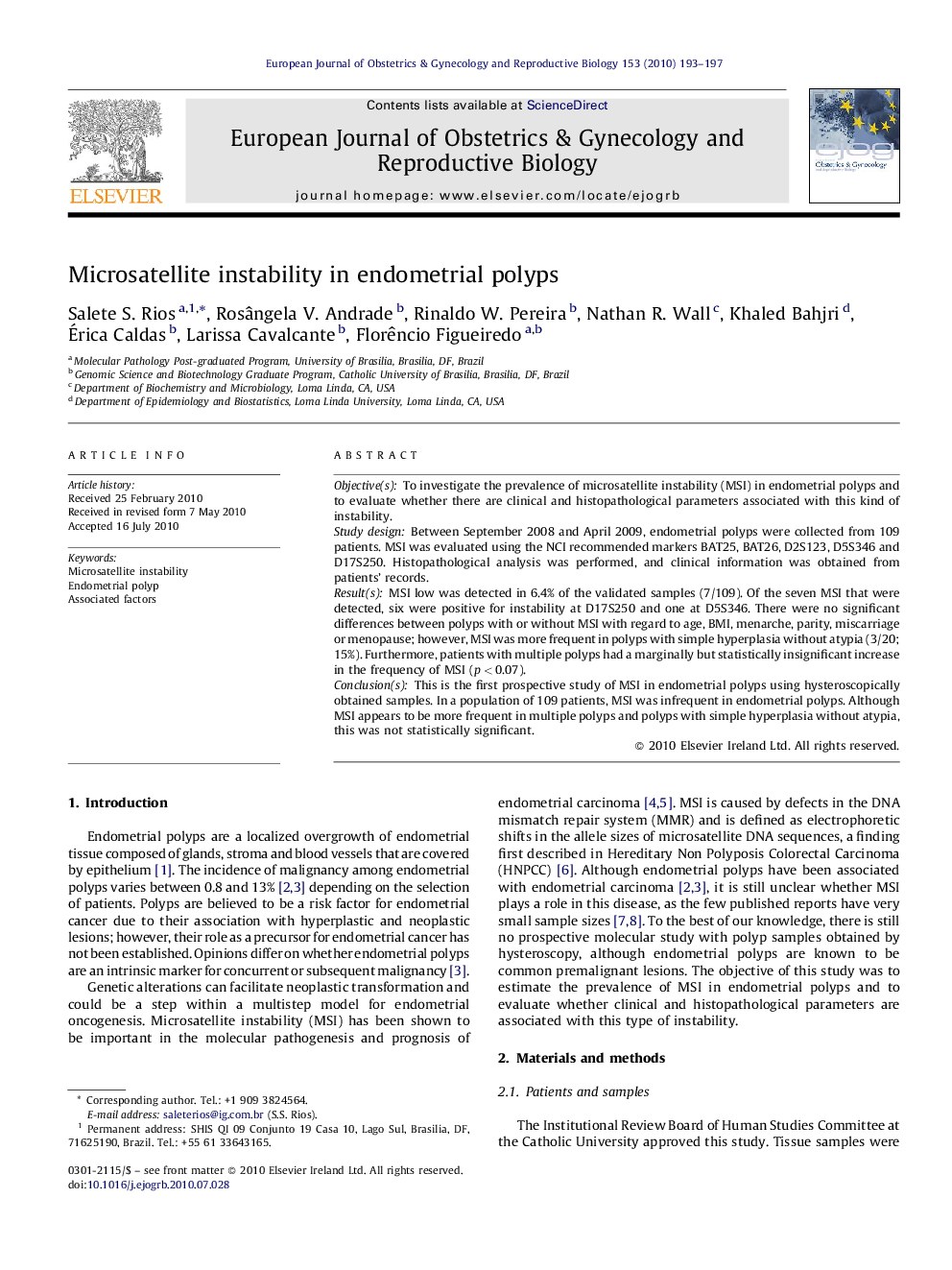| Article ID | Journal | Published Year | Pages | File Type |
|---|---|---|---|---|
| 3920645 | European Journal of Obstetrics & Gynecology and Reproductive Biology | 2010 | 5 Pages |
Objective(s)To investigate the prevalence of microsatellite instability (MSI) in endometrial polyps and to evaluate whether there are clinical and histopathological parameters associated with this kind of instability.Study designBetween September 2008 and April 2009, endometrial polyps were collected from 109 patients. MSI was evaluated using the NCI recommended markers BAT25, BAT26, D2S123, D5S346 and D17S250. Histopathological analysis was performed, and clinical information was obtained from patients’ records.Result(s)MSI low was detected in 6.4% of the validated samples (7/109). Of the seven MSI that were detected, six were positive for instability at D17S250 and one at D5S346. There were no significant differences between polyps with or without MSI with regard to age, BMI, menarche, parity, miscarriage or menopause; however, MSI was more frequent in polyps with simple hyperplasia without atypia (3/20; 15%). Furthermore, patients with multiple polyps had a marginally but statistically insignificant increase in the frequency of MSI (p < 0.07).Conclusion(s)This is the first prospective study of MSI in endometrial polyps using hysteroscopically obtained samples. In a population of 109 patients, MSI was infrequent in endometrial polyps. Although MSI appears to be more frequent in multiple polyps and polyps with simple hyperplasia without atypia, this was not statistically significant.
